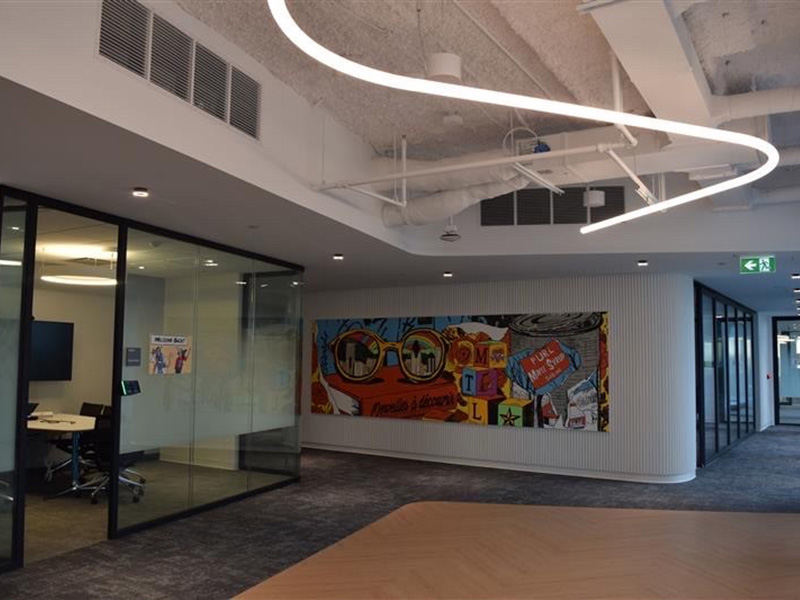

As SAP Canada Inc. gradually reopens its workspaces across the country, the design of its new office space in Montreal will serve as a model for its other locations.
Earlier this year, SAP pledged to embrace flexible working permanently, meaning that employees can currently continue to work remotely from home until mid-2022 or adopt a hybrid work arrangement. In light of this commitment, the organization is using the redesign of its offices in Montreal (pictured) to determine how to best support a hybrid workplace in 2022 and beyond.
Read: SAP Canada phasing in return to office, focusing on flexibility
The Quebec location, which opened its doors to workers in mid-October, is one of five “future of work” pilots for the company globally, says Cindy Fagen, SAP Lab’s managing director in Canada. “In Montreal, we had to think about design in a different way and examine what employees’ relationship is going to be with the office moving forward.”
As a result of the shift to a hybrid work model, SAP Canada has moved from two buildings in Montreal to two floors of a building and invested heavily in a large, open concept and data-driven space.
In planning the site, the company held visioning exercises with its senior team leaders to determine how the space would be used and how to integrate those uses into the design, as well as thinking about the potential challenges that could arise. Since the space is being used mostly for team-based work, the Montreal office has neighbourhoods with a block of seats, collaboration areas, conference rooms and a working café. There are also phone booths and other private spaces available for quiet work. The company also created a booking tool application that its employees are using to reserve a seat or see when colleagues are in the office and where they’ve chosen to sit. “The app is going to be key in really knitting employees together,” says Fagen.
Read: Employers must weigh several factors while planning for post-pandemic future: webinar
In order to measure the usage of the office, all areas have sensors to track the service levels and number of people congregating in any given area. “We have the opportunity to bring people together with this new design in a new way. We’re going to have to see how people use it and, if over time people come back in big numbers, we need that data to support the business case to take on more space.”
In September, SAP Canada started fully reopening its offices across the country, with the exception of its Calgary location, which is still closed due to the province’s state of emergency amid rising coronavirus cases. Employees at the organization’s other offices, in Ottawa, Toronto, Vancouver and Waterloo, Ont., can now return to the desk they left pre-pandemic and new hires can start at the office with a dedicated desk.
In October, SAP Canada opened the doors of the Montreal office so employees could tour the site. Fagen says the tours helped build excitement and buzz among staff, especially those who are anxious to return to working in the office. Staff have been able to book a desk at the Montreal office using the app since mid-October. While it’s early days, data showing usage to date shows there’s demand for collaboration spaces so teams can gather together in person after mostly being physically apart since the beginning of the pandemic.
Read: Majority of employers are planning return to workplace this year, finds survey
While change-management projects often have a clear end point, in the case of shifting to a hybrid work model, the end point won’t be when employees move into the office, says Fagen. Instead, she says that’s when the project really begins. “As a pilot, we will be sharing a lot of these learnings. And by being in high listening mode and doing design-thinking sessions with our leaders, maybe there are opportunities to change some things in other locations across the country and influence future builds globally.”
